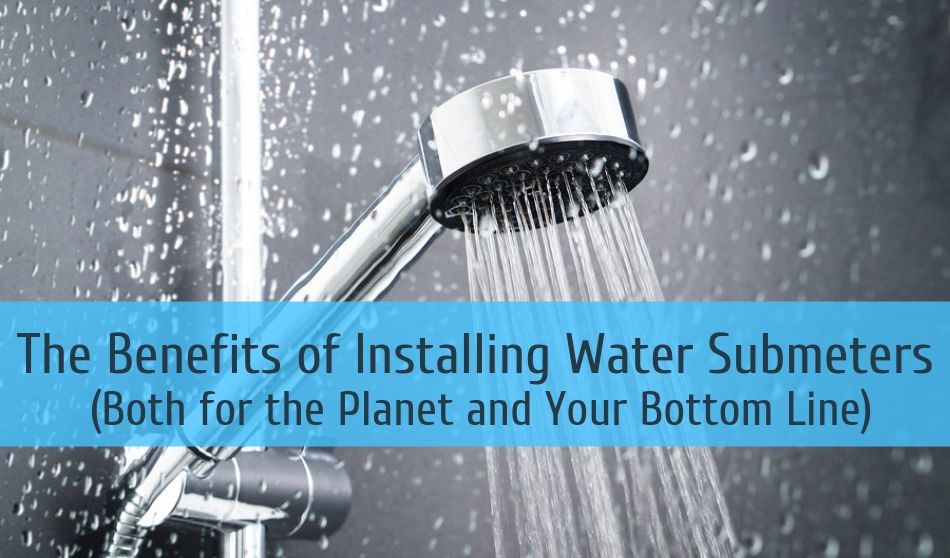
With conservation on everyone’s mind, now is an excellent time for landlords and property managers to take steps toward doing their part to conserve water. But if the mounting harm done to our planet hasn’t gotten your attention, maybe a chance to save money on your water bill will. If you own multi-family housing units, apartment buildings, townhouses, multiplexes, or condominiums, you can benefit from installing water sub-meters for your tenants.
The Law
Without submeters to gauge how much water each residential unit in a complex consumes, a landlord can’t hold tenants accountable for their individual use. Even if one family in an apartment building is saving, the landlord can’t know who’s offsetting the usage by wasting. Some states are choosing to regulate this issue. Multi-family residential units like apartments and condos account for such a significant portion of California’s water usage that Governor Jerry Brown signed a Senate Bill (SB7) in 2016 to mandate that multi-family housing constructed after January 2018 to have submeters for each apartment. Meanwhile, officials have advised owners of older buildings to install water submeters for their tenants, both as a means of conserving and a way to make sure water is used cost-efficiently.
The Cost of Forgoing Submeters
Drought conditions and escalating water bills make for a bad combination for a landlord’s bottom line. For instance, after water bills increased in California in the mid-2010s, many landlords tried passing water costs onto tenants. Unfortunately, landlords could not prove that tenants had used the amount of water for which they were charging. These landlords soon learned that, in addition to being unethical, these bills were unenforceable. Additionally, multi-family properties were faced with tenants seeking single-family residences to avoid the potential of being charged for a neighbor’s water wastage. Of course, it’s unfair for landlords to have to pay unusually high water bills, but it’s also unfair for tenants to have to shoulder the cost alone without evidence that substantiates the amount charged. Without the ability to accurately measure which tenants in which units are responsible for high water use, you can’t allocate a higher bill to their unit.
Submeters to the Rescue
All of this adds up to make the case that landlords should install water submeters for all of their multi-family tenants. Water submeters have become vastly more common than they were a decade ago, and quite convenient for both landlords and tenants. Through these submeters, tenants can rest assured they’ll only pay for what they use, while landlords only shoulder the bill for common areas. This practice, along with all the innovative new ways landlords have learned to conserve water in common areas, significantly reduces water usage as well as cost.
If you’re a landlord looking for water submeter solutions, I recommend hiring the services of property management professionals with extensive knowledge on the subject. But regardless of who your hire to help implement water submetering in your multi-family property, it’s absolutely essential that you make sure they’re well-versed in all local laws and regulations as they pertain to submetering. The last thing you want is for this potential win-win measure to go awry and land you in a lawsuit.
The Exempt
Now, even in drought conditions, some areas and types of housing are exempt from high water rates by law. To give an example for California (known for its recent drought issues in the last decade), if you own multi-family residential units near an educational space in the San Fernando Valley, or if your units are categorized under long-term, elderly care or timeshare facilities, then you don’t have to worry. And you’ll be happy to know that your building or residential structure is exempt from high water rates if it comes under low-income housing, mortgage revenue bonds, or local/federal loan grants.
When you install water submeters for your tenants, two things happen simultaneously. First, you get to know how much water tenants are using, thereby reducing waste. Secondly, you start saving money that ultimately leads to a significantly higher rental income. In my experience as a manager, property owners who pay to have water submeters installed in their apartment buildings typically see their investment recouped within the first twelve months. Ultimately, this uncomplicated water conservation step that you should take (on behalf of the environment) if you’re a landlord also happens to mean more money in your pocket on the first of every month. Being the good guy feels good, doesn’t it?